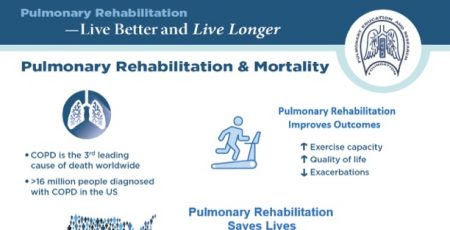13 Oct A Study of Leg Training and Breathing Patterns in COPD Patients
In an article co-authored by PERF board member William Stringer, MD, and published in Lung, the effects of leg training were analyzed in a controlled study of 28 COPD patients and 20 matched control subjects. The group of 28 exercised for 45 minutes a day, 4 days a week for 6 weeks on a stationary bicycle, while the control group did not follow this exercise regimen. During the study, maximal inspiratory and expiratory pressures (MIP and MEP), lung volumes, and two constant-work-rate (CWR) exercise tests (low- and high-intensity) were performed.
In the group that exercised, significant improvement was seen in MIP, MEP. Endurance to high-intensity CWR exercise increased; respiratory rate and end-expiratory lung volume decreased during both the low-intensity and high-intensity exercise tests. Dyspnea (shortness of breath) also decreased, as did leg fatigue and dynamic hyperinflation (exercise-induced air trapping).
In the non-exercising control group, no measurable changes were observed.
The bottom line? Exercise training has beneficial effects on respiratory pattern and dynamic hyperinflation that may explain the reduction in dyspnea in COPD patients who exercise regularly.
Along with Dr. Stringer, co-authors included Luis Puente-Maestu, Yolanda Martinez Abad, Fernando Pedraza, and Gemma Sánchez.





No Comments